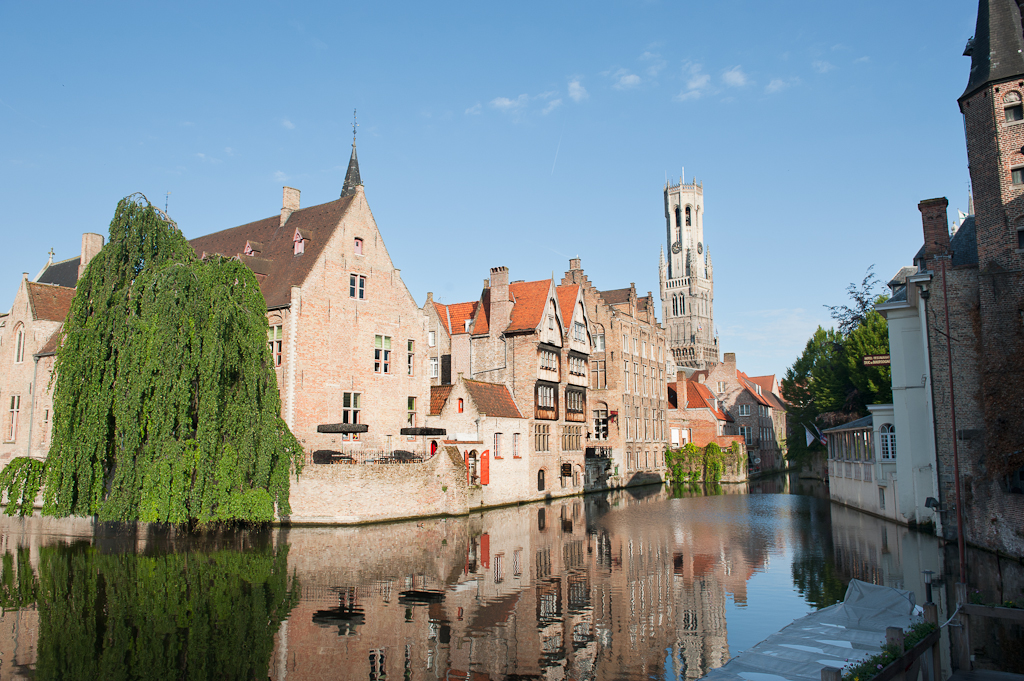I had my doubts about how The Venice of the North would compare. I’ve been to other places called the So-and-So of Such-and-Such, and guess what? Generally, it’s better for cities to claim their own identities because otherwise visitors get all excited and are, of course, subsequently let down. However, although Brugge is teeny-tiny, it really is all the superlatives that people spout.
Brugge (or Bruges) is enclosed by a moat that used to follow the city’s walls, now long gone. The first fortification was built in the first century, BC, to protect against pirates and the fortress around which the city would eventually grow was constructed in the 9th-century to fight off vikings.
From the 13th to 15th century, Brugge flourished as a major international trading and textile manufacturing center, growing to 200,000 citizens, twice the size of London at that time. Two 15th-century events brought the prosperity to a halt: conflict between the French and Hapsburg empires that resulted in rising taxes and revolts, and the city’s sudden cut-off from the sea as the Zwin estuary filled with silt. Trade moved to Antwerp and Brugge lay dormant for 300 years until new British settlers revived it. Today, approx. 100,000 people live in Brugge.

No comments yet.